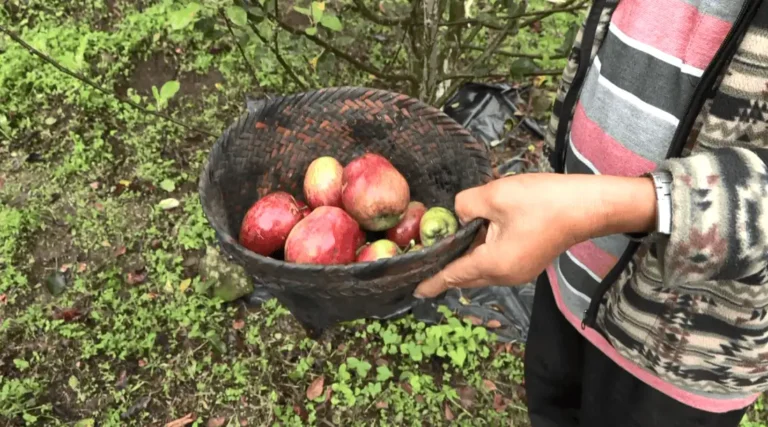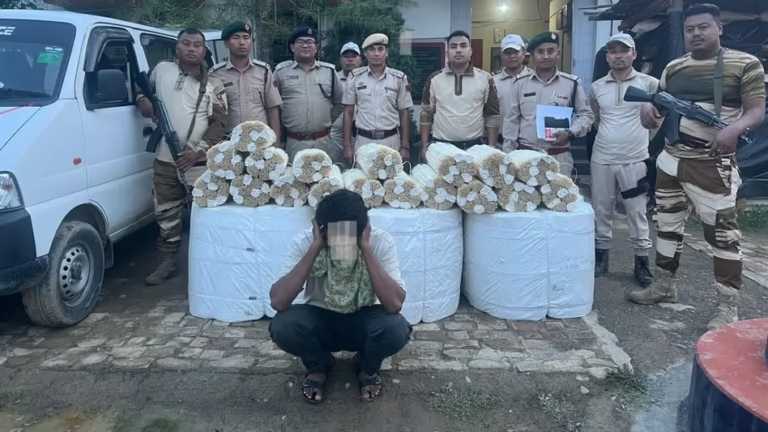Manipur Security Forces Recover Arms and Ammunition in Churachandpur
Quick Summary
In a decisive operation, security forces in Manipur’s Churachandpur district unearthed a cache of arms and ammunition, including military-grade rifles, pistols, and live ammunition. The joint effort by the Indian Army, Assam Rifles, and Manipur Police highlights the state’s ongoing struggle against insurgent activities. This recovery not only disrupts potential insurgent plans but also serves as a testament to the commitment of law enforcement agencies to ensure peace and safety in the region.
A Closer Look at the Recovery: Manipur’s Fight Against Illegal Arms
Introduction
Manipur, with its rolling hills and dense forests, is a land of breathtaking beauty. However, beneath its scenic charm lies a history of insurgency and conflict. The state’s proximity to international borders and its complex socio-political fabric have made it a hotspot for illicit activities, including the smuggling of arms and ammunition.
Recently, an operation in Churachandpur district uncovered a significant cache of weapons, sending ripples through the security and local communities. Let’s dive deeper into what this means for Manipur and its ongoing battle for stability.
The Operation That Exposed the Cache
Acting on a credible intelligence tip-off, a joint team of the Indian Army, Assam Rifles, and Manipur Police launched an operation in the forested terrains of Saiboh village in Churachandpur district. The area, known for its difficult terrain and history of insurgent activity, required meticulous planning and execution.
The recovery included:
- A Self-Loading Rifle (SLR) with a magazine
- Three Single Barrel Breech Loading (SBBL) country-made firearms
- Two 9mm pistols with magazines
- Live ammunition, including 7.62mm rounds and SBBL cartridges
These recoveries are a clear indication of the operational readiness of certain groups in the region, which, if left unchecked, could destabilize the fragile peace in Manipur.
What Makes This Recovery Significant?
1. The Type of Weapons
The mix of military-grade and locally manufactured firearms reveals the extent of the arms network operating in the region. The presence of 9mm pistols indicates a capability for precision and targeted operations, often associated with insurgent attacks.
2. Preventing Future Attacks
Every weapon seized represents one less potential threat to civilians and security forces. Such recoveries disrupt the operational capabilities of insurgent groups, curbing their ability to carry out attacks.
3. Confidence in Intelligence Networks
The successful execution of this operation highlights the effectiveness of intelligence-sharing and coordination among multiple security agencies.
Understanding Churachandpur: A Region of Strategic Importance
Churachandpur, nestled in the southwestern part of Manipur, has long been a melting pot of ethnic diversity and, unfortunately, conflict. Its geographical location, bordering Myanmar, makes it a critical area for monitoring cross-border activities.
The district’s dense forests and hilly terrain provide a natural cover for insurgent groups, making it a challenging but crucial region for security operations.
The Broader Implications for Manipur
A Blow to Insurgency
This operation is a significant step in dismantling the networks that facilitate insurgent activities. By removing weapons from their hands, security forces are not just addressing immediate threats but also sending a strong message about the state’s zero-tolerance policy toward such activities.
Strengthening Civilian Trust
When communities see tangible results from security operations, it builds trust. This trust is crucial for gathering further intelligence and fostering cooperation between civilians and law enforcement.
Enhanced Preparedness
Operations like these serve as a reminder of the need for constant vigilance. They highlight the evolving tactics of insurgent groups and the necessity for adaptive strategies.
Challenges in Combatting Illicit Arms in Manipur
While the recovery of weapons is a victory, it’s only part of the larger battle.
1. Porous Borders
Manipur’s border with Myanmar, part of the infamous “Golden Triangle,” is a major conduit for the smuggling of arms, drugs, and other illegal goods.
2. Localized Manufacturing
The presence of country-made firearms indicates that smuggling isn’t the only issue. Localized production of weapons is another challenge that requires targeted action.
3. Insurgent Adaptability
Insurgent groups are highly adaptive, constantly changing their tactics to evade detection. This makes intelligence gathering and operational planning a continuous challenge.
The Role of Technology and Collaboration
Modern security challenges require modern solutions. The use of technology in operations has been a game-changer.
Surveillance Drones
Unmanned aerial vehicles (UAVs) provide real-time intelligence, allowing forces to monitor large swathes of difficult terrain without putting personnel at risk.
Data Analytics
Sophisticated data analysis tools help identify patterns in insurgent activities, enabling preemptive action.
Community Involvement
Building relationships with local communities is equally vital. Residents can act as informants, providing crucial information that might otherwise go unnoticed.
The Path to Peace: What’s Next?
Manipur’s fight against illicit arms and insurgency is far from over. While operations like the one in Churachandpur are essential, they need to be part of a larger, multi-pronged approach.
1. Strengthening Border Security
Improved border management, including fencing and surveillance, is crucial to prevent the inflow of illegal arms.
2. Economic Development
Addressing the socio-economic roots of insurgency can reduce its appeal. Development programs that create jobs and improve living standards can go a long way.
3. Continued Intelligence Sharing
The collaboration between agencies needs to be seamless and ongoing. Regular training and the use of advanced tools can enhance their effectiveness.
FAQs
1. Why is Churachandpur significant in the context of insurgency in Manipur?
Churachandpur’s strategic location and challenging terrain make it a hub for insurgent activities, necessitating regular security operations.
2. What types of weapons were recovered in this operation?
The recovery included an SLR with a magazine, SBBL firearms, 9mm pistols, and live ammunition.
3. How do porous borders affect Manipur’s security?
Porous borders with Myanmar facilitate the smuggling of arms, ammunition, and drugs, complicating security efforts.
4. What role do communities play in security operations?
Local communities provide crucial intelligence and act as a support system for law enforcement in remote areas.
5. How does technology aid in counter-insurgency operations?
Technology like drones and data analytics enhances monitoring, intelligence gathering, and operational planning.




